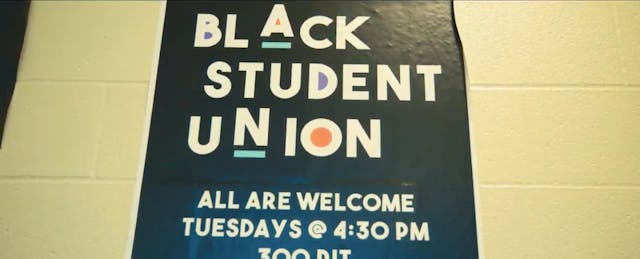When I first became a teacher, people said to me, “This is so great! We need more Black teachers.” At the time, I thought, “Don’t we just need good teachers, period?”
I was raised in Round Rock, Texas, the only Black student in my elementary school. I remember how hard my parents fought to get me and my brother into accelerated math, how my mother was the only parent of color on the school’s steering committee, and yet I was brought up to believe that race didn’t matter. Today, I teach marketing at the same high school I attended. Only 9 percent of students and 4 percent of teachers are Black district-wide.
In 2012, as a new teacher, I recognized what I believed to be a lack of positive campus culture. Many students referred to the school as “ratchet Round Rock.” Round Rock High School celebrated its centennial in 2013, and while our school buildings were not quite 100 years old, it sure felt that way to some students. Our campus has since been beautifully renovated, but back then some students didn’t feel their physical environment was at the same level as other schools in the district.
At the same time, the same small percentage of students participated in multiple activities, while much of the student body seemed disengaged. Although I taught only a few Black students I started to notice that students of color across campus often sought refuge in my room.
I wanted to better understand the roots of these issues, so when a group of students put together a new spirit council to address a negative campus culture, I volunteered to be their sponsor. I will never forget the day I arrived at school early for a Dragon Nation meeting to find two sweet Black girls waiting and eager for the meeting to begin. The girls sat on the left side of the room and by the time the meeting had started, 48 white students had filled in and sat opposite of them on the right side. Though Dragon Nation was ultimately a success at building community, this visual representation of racial division was a painful awakening that I will never forget. I saw the enthusiasm fade from the two girls’ faces as each time they raised their hands or spoke, white students talked over them. I remembered that feeling from my own education.
I started to notice similar behavior everywhere I looked. I got to know a mixed-race friend group of three boys. “When I’m with my friends, I get stopped everywhere,” the white student told me. “But when I’m by myself, teachers don’t notice when I break the rules.” He felt it was especially unfair because the majority of the time he was stopped with his friends, they weren’t doing anything wrong, he said. I encouraged them to document disciplinary differences over time. They used an assignment in their advanced quantitative reasoning class to conduct a racial equity audit of our campus.
Then, in the summer of 2017, another student, Micah Moore, approached me. She had attended a women’s leadership camp and left wanting to form a Black Student Union (BSU), an organization that had not existed at Round Rock High since a six-month attempt back in 1982. Micah needed a faculty sponsor. I agreed immediately and brought an additional sponsor on board.
“This space is open to everyone, it just prioritizes Blackness for 50 minutes at a time,” Micah said at the first BSU meeting, to a full room of students. At our weekly community circle, we cover hot topics like the recent college admissions scandal. In our first year, we printed 217 posters of lesser-known heroes in Black history and provided one per classroom in our school. We plan viewings and discussions for films like “Black Panther” and “The Hate U Give” and bring in guest speakers like Rodney Page, the first Black head coach of a collegiate team in the South. We partner with organizations like Texas Appleseed, Undoing Racism Round Rock and the Round Rock Black Parent Association.
We are raising a new crop of leaders. Students have advocated at the district level to hire more teachers of color and more counselors than cops, and at the state level to address disproportionate discipline. Parents of color have come together to learn and support. When students were not being provided information about Historically Black Colleges and Universities at school, parents decided to put on an HBCU fair to fill the gap. There are now five active BSUs across our district and several more campuses who are interested in forming their own Black Student Union.
My involvement has fundamentally changed how I think about race and inclusion in our education system. Black students need to see people who look like them in positions of authority and white students need to see people who do not look like them in positions of authority.
At the start of every BSU meeting, I take a moment to observe the faces around the room. Students usually start out full of joy as we laugh and eat our snacks. Sometimes though, the world gets heavy as we are forced to confront some of the realities of today. We unpack these things. We talk about how best to support, to advocate. We come together in community. That’s something that’s needed everywhere.


